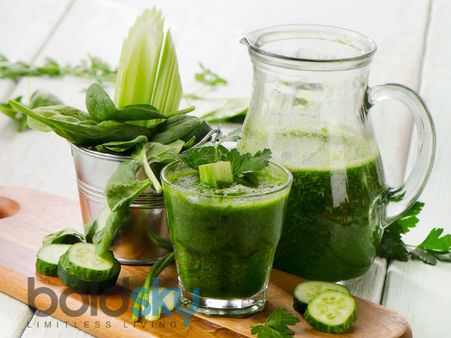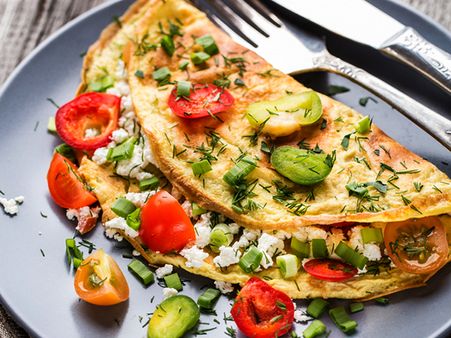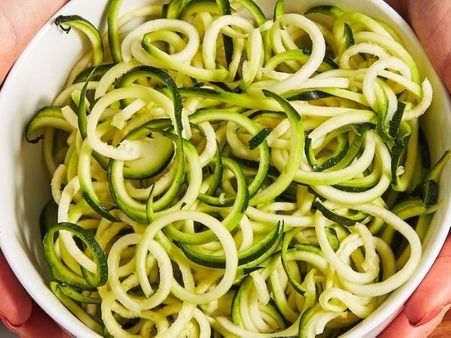Just In
- 17 min ago

- 4 hrs ago

- 7 hrs ago

- 9 hrs ago

Don't Miss
- Education
 RMLIMS Nursing Officer Recruitment 2024; Apply for 665 Vacancies, Know more
RMLIMS Nursing Officer Recruitment 2024; Apply for 665 Vacancies, Know more - News
 ED Alleges Kejriwal Deliberately Consuming Mangoes And Sweets
ED Alleges Kejriwal Deliberately Consuming Mangoes And Sweets - Sports
 Murali Sreeshankar Pulls Out Of Paris 2024: Indian Long Jumper's Olympic Dream Comes Crashing Due To Injury
Murali Sreeshankar Pulls Out Of Paris 2024: Indian Long Jumper's Olympic Dream Comes Crashing Due To Injury - Finance
 HDFC Life Q4 Results: PAT Soars 15% To Rs 411 Cr; Rs 2/Share Dividend Declared
HDFC Life Q4 Results: PAT Soars 15% To Rs 411 Cr; Rs 2/Share Dividend Declared - Movies
 Bade Miyan Chote Miyan Box Office Collection Week 1: Fighter Stands 190% Higher Than Akshay’s Film In 7 Days
Bade Miyan Chote Miyan Box Office Collection Week 1: Fighter Stands 190% Higher Than Akshay’s Film In 7 Days - Technology
 Apple’s iPhone 17 Plus Could Sport a Smaller Display Compared to iPhone 15 Plus
Apple’s iPhone 17 Plus Could Sport a Smaller Display Compared to iPhone 15 Plus - Travel
Telangana's Waterfall: A Serene Escape Into Nature's Marvels
- Automobiles
 The Rezvani Retro RR1 Is A Modified Porsche 911 Done Right
The Rezvani Retro RR1 Is A Modified Porsche 911 Done Right
10 Healthy Ways To Eat More Vegetables EveryDay
Vegetables are an excellent source of healthful nutrients like fibre, vitamin A, vitamin C, vitamin E, vitamin K, folate, potassium, manganese, copper, iron and zinc. Eating plenty of vegetables regularly will help improve your health and well being. Studies have shown that consuming veggies daily will help you maintain weight, boost immunity, improve heart health, improve gastrointestinal problems, manage cancer, support brain health and control blood pressure and diabetes, among others [1] [2].
The World Health Organization (WHO) recommends the intake of five to eight servings (400-600 g) of veggies daily to reduce the risk of chronic diseases and to prevent micronutrient deficiencies.

There are many people who don't like eating vegetables, while others just love eating them. Consuming vegetables daily can become quite boring if prepared in the same way. So, why not prepare your veggies in an appetising way that will be healthy as well.
Here are some delicious and healthy ways to eat your vegetables so that you don't get tired of eating them the same old way. Take a look.

1. Add vegetables to sauces
Adding pureed veggies to your sauces and dressings is a healthy way to eat your veggies. Vegetables that are great to puree are carrots, cauliflower, bell peppers, beetroot, sweet potato, squash and leafy veggies like spinach. These vegetables work well in all kinds of pasta sauces and dressings.


2. Blend veggies into smoothies
If you love having smoothies, then you won't mind adding some green veggies to your smoothie. Smoothies are quick to prepare and are tasty and healthy when veggies are added to it. You can add some veggies of your choice to your fruit smoothie or you can prepare a perfect green smoothie that contains loads of leafy greens such as spinach, kale, Swiss chard, beet greens and romaine lettuce. These leafy greens are packed full of nutrients and bioactive compounds such as vitamin K, lutein, nitrate folate, beta-carotene, kaempferol and α-tocopherol (vitamin E) [3].

3. Prepare vegetable omelette
Omelettes are a classic breakfast dish made from beaten eggs and fried in butter or oil. Sometimes, fillings such as cheese, meat and mushrooms are stuffed into the omelette to increase its flavour. You can spruce up your omelette by adding some veggies like spinach, bell peppers, tomatoes, onions, asparagus and artichoke to it. The vegetable omelette will not only be tasty but also will provide you with ample of nutrients.

4. Use veggies in burgers
No, we aren't telling you to ditch your favourite meat burger. Just adding some veggies as a topping to your meat burgers will make it more juicy, flavourful and healthy too. Toppings such as tomatoes, Brussel sprouts, onions and mushrooms can be added.

5. Grill vegetable kebabs
Kebabs are popularly savoured as a starter or a snack. They are made with chicken, beef and lamb. However, there are vegetarian variants of kebabs too that you can indulge in. There is a wide variety of veggies that you can transform into delectable kebabs, these include raw banana, beetroot, green peas, bell peppers, mushrooms and zucchini.

6. Add veggies to oatmeal
Why limit oatmeal to berries, fruits, nuts and seeds when there are so many healthy vegetable options that go well with oats? Whether you are making it for your breakfast or preparing a last minute dinner, a bowl of savoury oatmeal is a great way to load up on veggies. Add tomatoes, eggs, mushrooms, zucchini, peas and beans to your savoury oatmeal [4].


7. Cook cauliflower rice
Cauliflower rice is a low-carb substitute to white rice. It is used as a base for pizzas and other foods and added to stir-fries, burritos and soups. Cauliflower rice is made by pulsing cauliflower florets in a food processor until it forms into small granules. Cauliflower is an excellent source of vitamin C, vitamin B, vitamin A, calcium, iron, fibre, folate and potassium [5].

8. Eat zucchini lasagna
Traditionally lasagna is made by layering pasta noodles with sauce, meat, cheese and seasonings. But in the case of zucchini lasagna, the pasta noodles are replaced by strips of zucchini, a seasonal vegetable with high nutritional and medicinal properties [6].

9. Try vegetable noodles
Swap spaghetti noodles with vegetable noodles as the latter are a great low-carb food than spaghetti which is high in carbs. Vegetable noodles are made by inserting veggies into a spiralizer, which processes thin strips of veggies that look like noodles. If you don't have a spiralizer, you can shred or slice the veggies and combine it with sauces and meat and eat it like pasta.
Image ref: Delish.com

10. Make cauliflower pizza crust
You must be acquainted with the traditional flour-based pizza crust.What if we told you there is a healthy and delicious pizza crust that is gaining popularity and used as a substitute for the traditional flour-based pizza crust. Yes, the cauliflower pizza crust that is a veggie alternative to the traditional flour-based pizza crust. You can add cheese, tomato sauce and fresh veggies as toppings on the cauliflower pizza crust.
-
 pregnancy parentingIs Your Teen Kid Not Eating Vegetables? 5 Ways To Get Teenagers To Start Enjoyin' Veggies
pregnancy parentingIs Your Teen Kid Not Eating Vegetables? 5 Ways To Get Teenagers To Start Enjoyin' Veggies -
 healthBangalore: Heavy Metal Contamination In Vegetables; How To Spot Contaminated Veggies?
healthBangalore: Heavy Metal Contamination In Vegetables; How To Spot Contaminated Veggies? -
 nutritionFive Leafy Vegetables That Are A Must Add To Your Diet, Esp If You Are Over 30
nutritionFive Leafy Vegetables That Are A Must Add To Your Diet, Esp If You Are Over 30 -
 skin careFrom Kitchen To Your Face: Vegetables You Can Use On Your Skin
skin careFrom Kitchen To Your Face: Vegetables You Can Use On Your Skin -
 nutritionIndian Vegetables That Are A Must Add To Your Diet; Recipes And Possible Side Effects
nutritionIndian Vegetables That Are A Must Add To Your Diet; Recipes And Possible Side Effects -
 wellnessDon’t Throw Away The Peel Of These Fruits And Vegetables, They Have Benefits And Other Uses Too
wellnessDon’t Throw Away The Peel Of These Fruits And Vegetables, They Have Benefits And Other Uses Too -
 wellnessWhat Happens To Your Body When You're Not Eating Enough Vegetables?
wellnessWhat Happens To Your Body When You're Not Eating Enough Vegetables? -
 wellnessBest Superfoods For Men And Women Over 40
wellnessBest Superfoods For Men And Women Over 40 -
 diabetesIs Consumption Of Raw Food Diet Beneficial In Diabetes?
diabetesIs Consumption Of Raw Food Diet Beneficial In Diabetes? -
 prenatal11 Healthy Calcium-Rich Foods For Pregnant Women
prenatal11 Healthy Calcium-Rich Foods For Pregnant Women -
 wellness51 Fibre-Rich Foods Which May Help Lose Weight Easily
wellness51 Fibre-Rich Foods Which May Help Lose Weight Easily -
 wellness11 Must-Have Healthy Vegetables During The Monsoon
wellness11 Must-Have Healthy Vegetables During The Monsoon


 Click it and Unblock the Notifications
Click it and Unblock the Notifications




